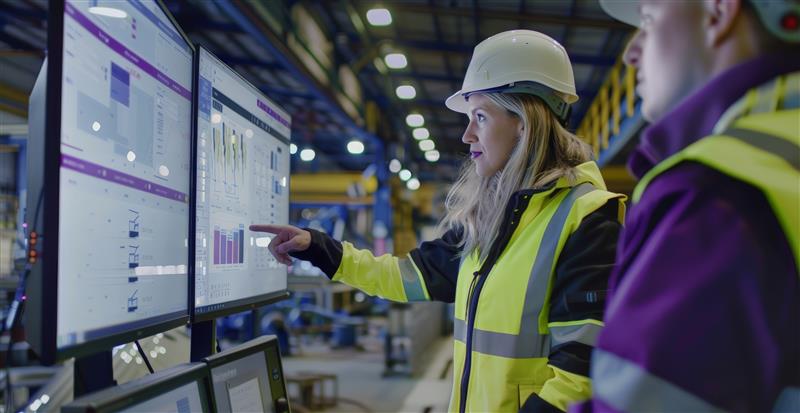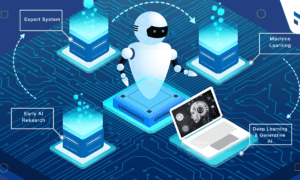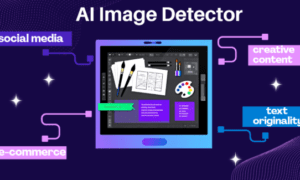The idea of maintenance has come a long way. Once, it meant reacting. Then came prevention. Now? It’s about prediction. Because who wants uncertainty to drain an entire operation’s bottom line? That’s predictive maintenance, a revolution happening behind the scenes in manufacturing, healthcare, real estate, and more. It’s the difference between guessing and knowing. Between routine checklists and real-time insight.
But in 2025 this space is turning sharper, faster, and far more intelligent. The stats say it all – the global predictive maintenance market size grew to USD 9.21 billion in 2025 and is predicted to surpass around USD 79.70 billion by 2034. (Source) So, let’s explore what’s making predictive maintenance tick in 2025, the tools and technologies reshaping how machines are heard, understood, and taken care of. The real engine behind smart building maintenance, whether industrial or commercial.
1) The Shift: From Data Collection to Data Analytics
Sensors are everywhere; that’s a known thing. The real story in 2025 is how the data is finally becoming meaningful. Not just numbers on dashboards, but insight into context.
IoT predictive maintenance today isn’t about collecting every vibration or temperature spike. It’s about understanding what they mean together. Instead of one piece of equipment reporting an anomaly, the system cross-checks across thousands of data points, comparing airflow, humidity, system load, and energy consumption, all in real-time.
This has emerged as a whole new perspective for smart building maintenance. Tools in 2025 are built to interpret environments. And when that environment shifts in a way that hints at wear, inefficiency, or imminent failure, you know before you feel it.
2) AI That Doesn’t Just Detect, It Learns You
AI isn’t just used in predictive maintenance. It’s becoming native to it. What’s changing this year is how AI tools are tailored to your specific assets, systems, and usage habits. Machine learning models now refine themselves based on building behavior. They adapt as usage patterns shift, seasonally, hourly, or occupancy levels.
You’re no longer working with rule-based triggers. The AI behind predictive systems in 2025 knows the difference between an unusual reading and your operational normal quirks. It learns over time, just to detect anomalies, to anticipate how wear and inefficiencies start developing before they register as a problem. It’s insight that gets smarter the more you use it.
3) From Alerts to Answers: Predictive Dashboards Get Smarter
Alarms are easy. Insight is hard. And in 2025, that difference matters more than ever. Modern predictive maintenance platforms are moving beyond just flashing warnings or pushing email alerts. They offer decision support by telling you what it means and what to do next.
Dashboards now contextualize alerts with real-time data overlays. They show efficiency curves, degradation trends, energy impact, and historical patterns, all at a glance. And they don’t just speak to technicians. They speak to facilities teams, operations managers, and executives with layered access and tailored insights.
4) Edge Computing Moves to the Forefront
Here’s what’s new: not all data needs to travel to the cloud. In fact, in predictive maintenance, some of the smartest decisions now happen locally, right at the edge. Edge computing in 2025 is foundational. When milliseconds matter, like detecting a subtle shift in vibration or a sudden temperature spike, the edge makes the call.
These edge devices now come equipped with built-in analytics engines. They preprocess data, run diagnostic models, and trigger actions instantly. Only what’s meaningful is sent to the cloud. The result? Faster response, leaner networks, and lower latency, are especially crucial in smart building maintenance where system health affects comfort, compliance, and cost, all at once.
5) Integration Is the Game-Changer
It’s no longer about having an IoT predictive maintenance tool. It’s about how well it plays with the rest of your ecosystem. In 2025, integration is non-negotiable.
Predictive platforms must connect with building management systems (BMS), HVAC controls, energy dashboards, and asset management software. They must translate sensor output into actions, automatically adjusting ventilation, re-routing loads, or scheduling service without human intervention.
The best tools are those that disappear into workflows, syncing with what’s already in use, and enhancing current ones. Predictive maintenance is a layer of intelligent infrastructure for smart building maintenance.
6) Sustainability and Predictive Maintenance Finally Merge
There are no such things as efficient operations without efficient maintenance. As sustainability reporting becomes stricter, predictive maintenance tools are evolving to track performance and carbon impact. They help calculate how failing systems are affecting energy use.
They tie equipment inefficiencies directly to emissions. And they support documentation, making compliance simpler, faster, and data backed. In 2025, predictive tools aren’t just helping equipment run longer. They’re helping buildings run clean.
7) Zero-Touch Maintenance Rises
There’s a subtle shift happening. Predictive maintenance is moving toward autonomous action. The tools in 2025 aren’t just telling teams what’s wrong. They’re starting to fix it themselves.
That might mean auto-calibrating a variable-speed motor. Or self-tuning a ventilation schedule based on performance trends. Or even initiating a technician dispatch without any manual input. This is zero-touch maintenance, powered by AI, authorized by logic, and executed by automation.
8) User Experience Is the Differentiator
All the technology in the world won’t matter if it’s buried in complex menus or hard-to-interpret graphs. In 2025, the standout predictive maintenance platforms are those that feel less like “software” and more like clear, visual guidance. Interfaces are intuitive.
You don’t need to be a data scientist to understand what needs attention. And you don’t need to be a technician to see where the building is bleeding energy. The UI doesn’t overwhelm you; it empowers you.
Conclusion: Predictive Maintenance Has Grown Up
The days of flashy, futuristic promises are behind us. Predictive maintenance in 2025 is mature, operational, and practical. It’s about quiet intelligence embedded into the fabric of infrastructure, listening, learning, and acting.
This year’s leading tools are giving us more than data; they’re giving us clarity, foresight, and confidence. Maintenance, at its best, isn’t about reacting. It’s about knowing and doing the right thing before you have to.

































